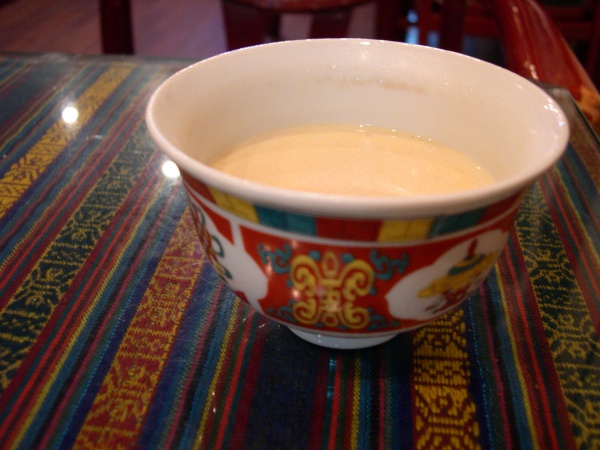Facts About Butter tea
Butter tea, also known by various names such as po cha, cha süma, sūyóu chá, or gur gur cha, is a cherished traditional drink in the Himalayan regions, including Nepal, Bhutan, India, Tibet, and parts of China. This distinctive beverage is typically made from tea leaves, yak butter, water, and salt. However, cow's milk butter is often used as a more affordable and accessible alternative.
In Tibetan culture, butter tea is more than just a drink; it's a vital source of energy and hydration, especially crucial in high-altitude environments. It is a common gesture of hospitality, served to guests in small sips with the host continuously refilling the bowl. Butter tea also plays a role in the consumption of tsampa, a type of roasted barley flour, either by pouring the tea over it or dipping the tsampa into the tea.
The history of tea in Tibet dates back to the 7th century during the Tang dynasty, gaining widespread popularity around the 13th century. Making butter tea is quite an involved process. Traditionally, it involves boiling tea leaves for an extended period, then mixing the brew with fresh yak butter and salt to create a thick, stew-like liquid. Another method includes steeping tea leaves in water, adding salt, and then churning the mixture with butter until it reaches the desired consistency.
Today, there are modern twists to this age-old recipe. Some people use tea bags, different types of butter, and even blenders to make the churning easier. Despite these contemporary adaptations, butter tea remains a beloved staple in Himalayan culture and a symbol of warm hospitality.

 Laos
Laos